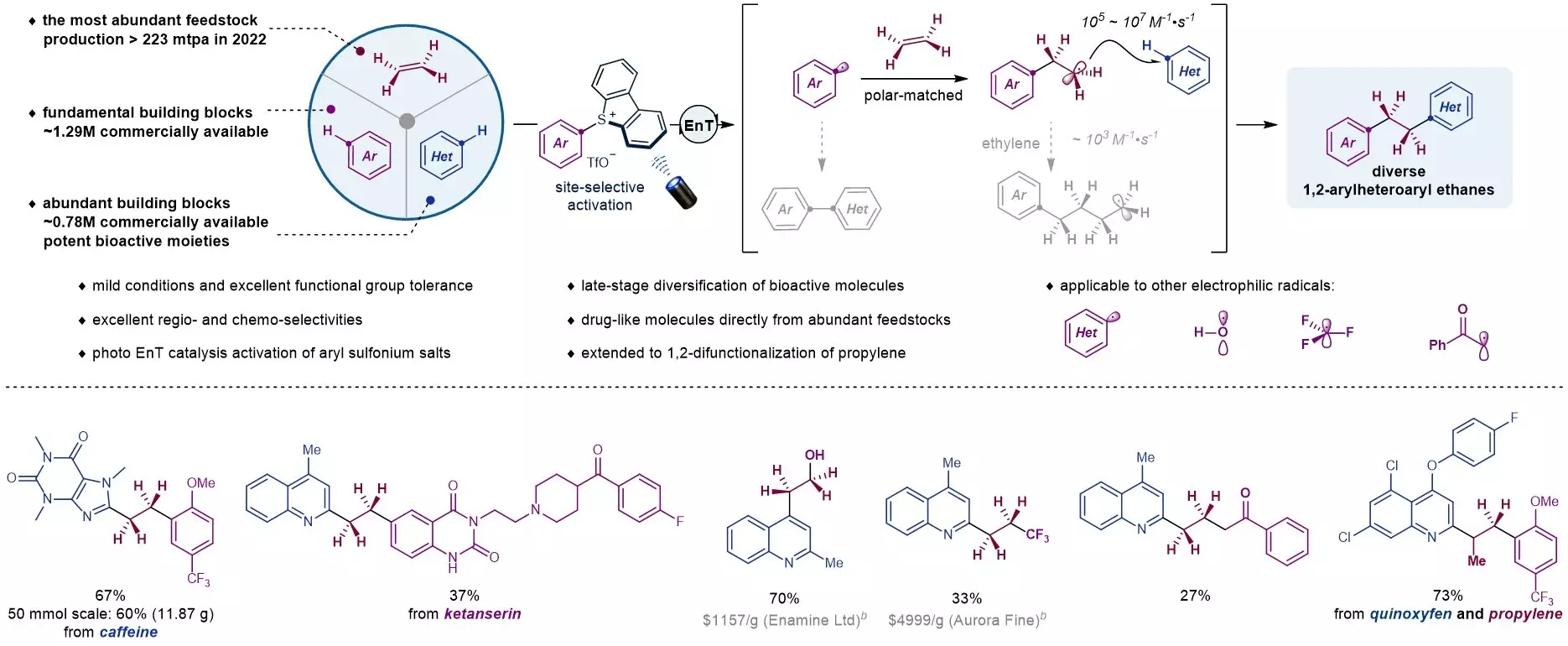Chemists at the National University of Singapore (NUS) have recently made a breakthrough in organic synthesis by developing a modular approach to create 1,2-arylheteroaryl ethanes. This class of compounds is crucial for drug discovery and pharmaceutical development, opening up new possibilities for molecular diversity and fine chemical production.
Traditional synthesis methods for 1,2-arylheteroaryl ethanes have faced various challenges, including reliance on pre-functionalized synthons, lengthy synthetic routes, limited substrate compatibility, and demanding reaction conditions. These hurdles have hindered the efficient and sustainable production of these valuable compounds in the past.
The new approach pioneered by Associate Professor Wu Jie and his research team utilizes basic feedstock chemicals such as ethylene, arenes, and heteroarenes to create 1,2-arylheteroaryl ethanes. Ethylene, a key component of the global chemical industry, serves as a primary feedstock, while arenes and heteroarenes provide fundamental chemical groups, enabling the modular assembly of complex structures from readily available sources.
The success of this approach lies in the use of light to initiate the generation of aryl radicals from aryl sulfonium salts. These reactive intermediates play a crucial role in organic reactions and react with ethylene and heteroarenes to form the desired chemical compounds. By harnessing the power of aryl radicals, the researchers have unlocked a new pathway for efficient and sustainable synthesis of 1,2-arylheteroaryl ethanes.
This significant advancement in utilizing gaseous alkenes and coupling multiple fundamental components has the potential to revolutionize the drug discovery and petrochemical industries. By enabling the modular and sustainable production of diverse molecular scaffolds, this innovative approach could lead to the development of new pharmaceuticals and fine chemicals with broad applications.
To add practicality to this synthetic protocol, a simple in-house built circulation flow system has been employed by the researchers. This further enhances the efficiency and reproducibility of the process, making it more accessible for applications in drug discovery and fine chemical production.
The modular approach developed by the researchers at NUS represents a significant step forward in the field of organic synthesis. By leveraging basic feedstock chemicals and innovative light-initiated radical generation, they have paved the way for the efficient and sustainable production of 1,2-arylheteroaryl ethanes, with far-reaching implications for the pharmaceutical and petrochemical industries.


Leave a Reply